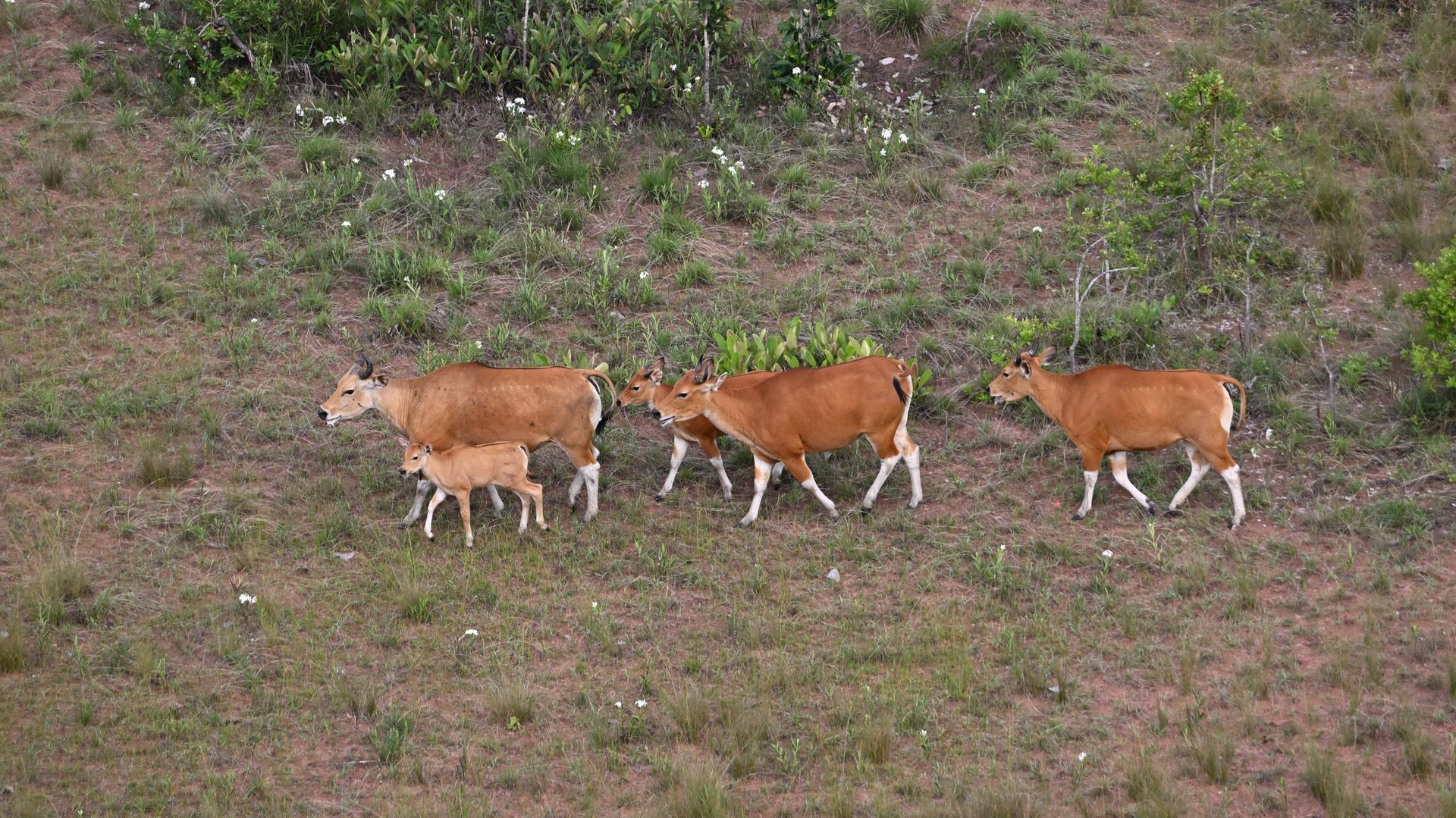
Animal Profiles

Globally Threatened Species of Siem Pang
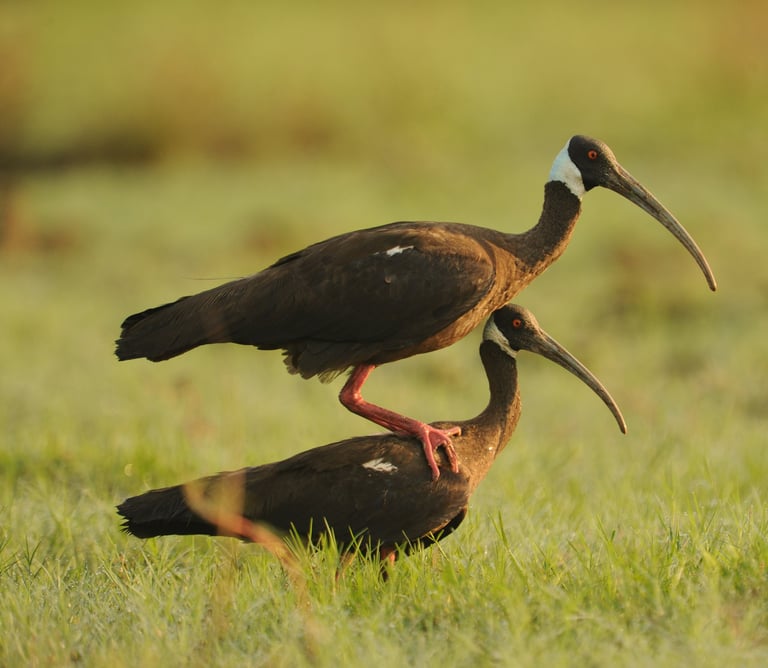

Siem Pang Wildlife Sanctuary is a biologically diverse and globally irreplaceable site, necessary to protect. Without the land protections the Rising Phoenix provides, the site may be leased as an Economic Land Concession and its forest and wildlife may be destroyed, replaced with crops like rubber and cassava.
The IUCN List
The IUCN Red List uses precise criteria to evaluate the extinction of species. The aim being to convey the urgency of conservation issues and to help the international community try to reduce species extinction. Those species that are at most risk of global extinction are classified as "Critically Endangered." Astonishingly, Siem Pang supports 8 of such species, 5 of which are birds. Siem Pang also supports more than 5 endangered species, three mammals, and three birds.








Eld's Deer
Eld's deer was previously distributed across Indochina, yet has now been hunted to extinction in Thailand and Vietnam. Cambodia is supporting most of the remaining population. Our estimates predict that there are most likely less than ___ Eld's deer left in Siem Pang. Sadly, it is still common to see racks of male antlers displayed in houses in Siem Pang, indicating they are still hunted. Left alone, their numbers will recover, and over time, their sustained recovery will provide a prey base. Without the protections of Siem Pang Wildlife Sanctuary, it is inevitable that this population would be hunted to extinction.
Late March marks the start of the breeding season or rut. At this time, the bellowing of the stags can be heard as they proclaim their presence. During the rut the stags begin rounding up and defending harems of females against the advances of other males. Asserting the right to mate with females of his choice always carries potential dangers and risks for any male. During the rut, stags are preoccupied with females and their guard against predators may be lower than at other times of year. The biggest threat they face however, is the risk of serious injury or death from clashes with other males
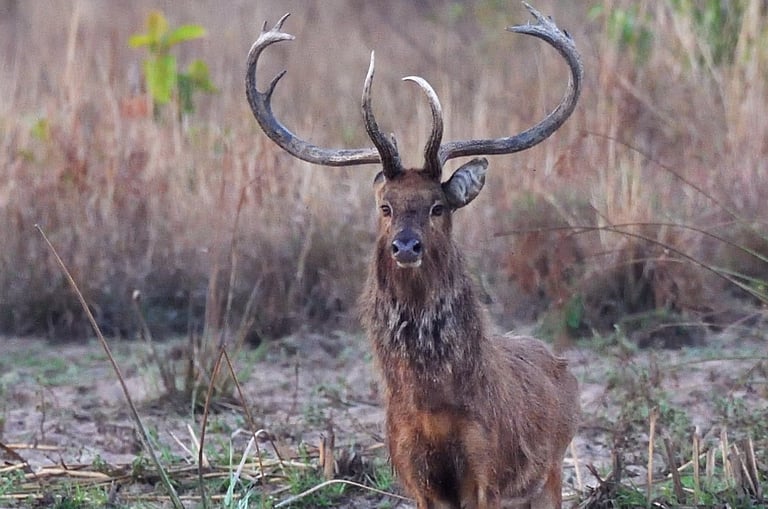

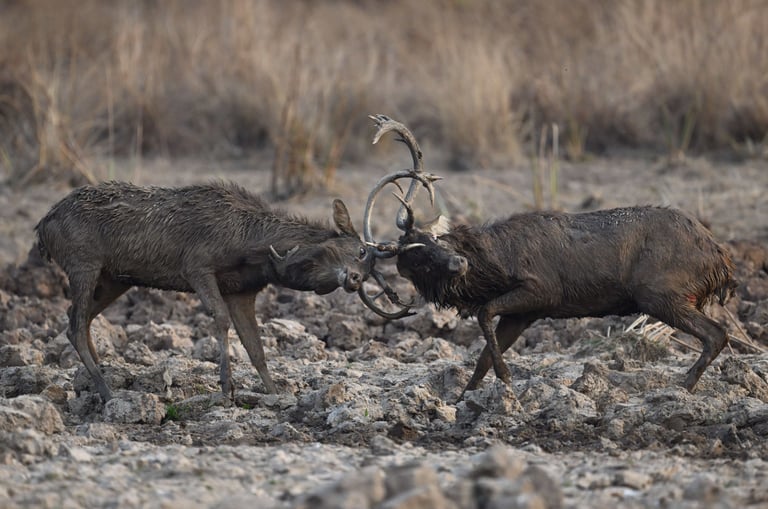

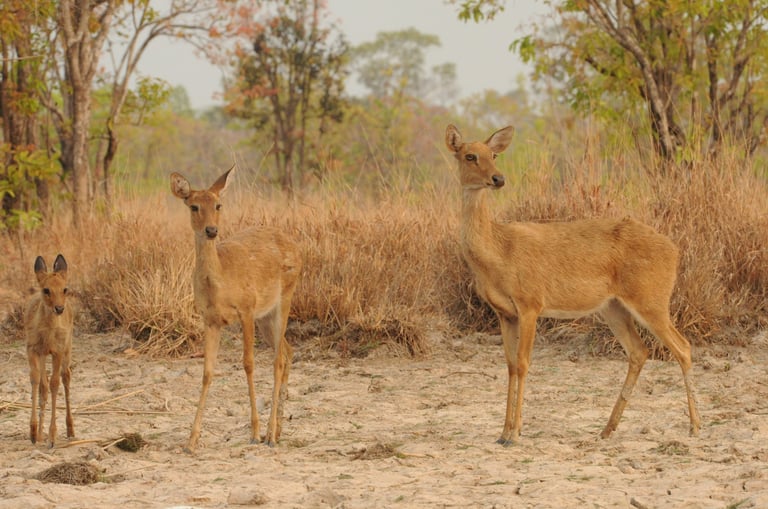

CONSERVATION STATUS:


When drinking at the trapeang, the females must be ever vigilant against predators. They remain bunched close together and are alert to sounds and scent carried on the early morning breeze. Although the day will be long and hot, they must drink quickly before retreating to the shade of the forest to sit out the heat of the day. Some of the females drop their fawns later in the previous rainy season, and their small young still accom pany them at all times. If the young are not yet weaned, the females will not be receptive to the advances of the ever-present stag.
Giant Ibis
The critically endangered giant ibis is the largest ibis in the world. The giant ibis thrives in the most remote and undisturbed forests and now survives only in the deciduous dipterocarp forest of northern and eastern Cambodia. Extinct in Thailand and Vietnam, and probably so in Laos. 25% of the global Giant Ibis population are in Siem Pang, around 700 birds, an populated that has increased thanks to the protections of the Siem Pang Wildlife Sanctuary (SPWS). In Cambodia, 50% of the giant ibis population resides in SPWS. Our monitoring has shown they have approximately 2 chicks per nest and 40 nests in total per year. Potentially, therefore, one-sixth of all remaining members of this species inhabit Siem Pang.
If the forests of Siem Pang were to be destroyed, the giant ibis would slip further towards global extinction. Its small range size and small and declining population have led to it being classified by the IUCN as Critically Endangered. It is not inevitable that the national bird of Cambodia should follow the national mammal, the Kouprey Bos sauveli, to extinction. Giant ibis are adapted to feed both partially submerged in water and at the drier margins of trapeangs and rivers. By the start of the dry season, the young are fledged and family parties have started to feed at trapeangs throughout the forest. Observing the giant ibis is not easy. The species is shy and shuns humans. Even the distant sound of an approaching motorbike will lead giant ibis to abandon feeding and walk off into the taller grass and forest edge surrounding a trapeang. Sometimes more than one family will arrive at a trapeang in Siem Pang.
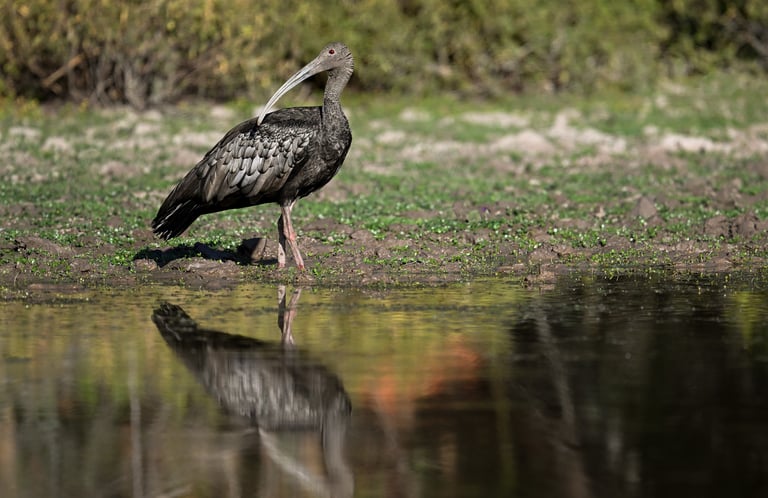

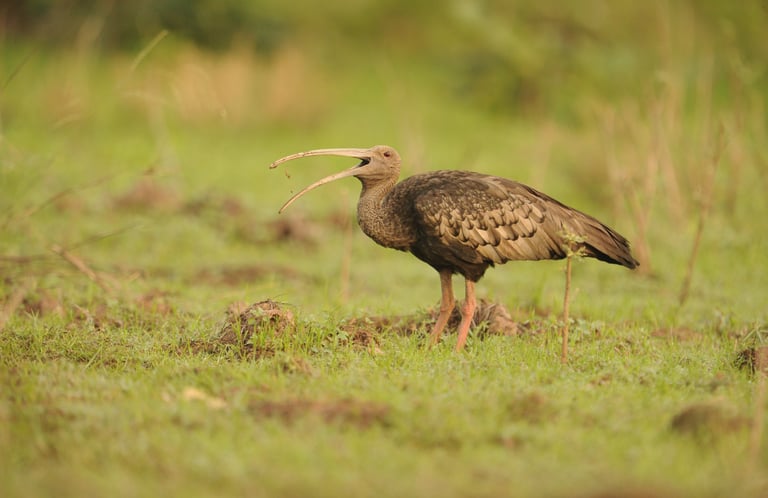

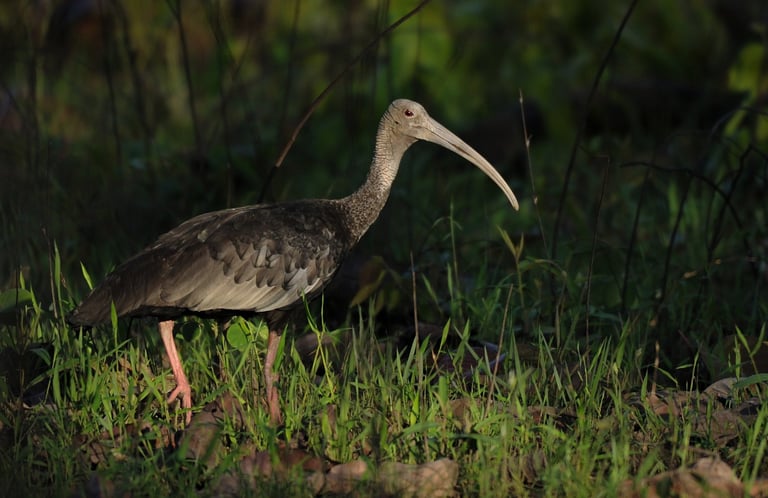

CONSERVATION STATUS:


Giant Ibis have been shown to prefer larger bodies of water with extensive muddy margins that are used regularly by buffalo. Such areas were also shown to have a higher density of Mole Crickets Gryllotalpidae. Trapeangs with higher densities of frogs and grasshoppers are also preferred. For their survival giant ibis require trapeangs that retain water throughout the dry season and this factor could limit the giant ibis population size at Siem Pang. However, during the dry season, when food is scarce, both the giant ibis and white-shouldered ibis benefit from their specialized feeding techniques. Their long decurved bills are able to extract frogs or eels from the muddy ground.
White-Shouldered Ibis
Formerly distributed across Cambodia, Laos and Vietnam, the range of the white-shouldered ibis collapsed during the 20th century. The reasons for this are not fully known but include the near extinction of the large mammal fauna that once existed across the region, whose grazing maintained grassland where the ibis could feed, as well as the loss of wetlands and deforestation. Today, Cambodia supports most of the remaining global population of this species, which stands around one thousand birds, of which the population at Siem Pang is the largest. The small population size and the continued threat to its habitat has led the species to be classified as Critically Endangered by the IUCN, meaning it faces a very high probability of extinction in the near future.
During the dry season white-shouldered ibis are feeding mainly at trapeangs because these are the only remaining places that support their main food at this season - frogs. The sun-baked crazy-paving surface of a dry trapeang bed may offer rich pickings for a hungry ibis. Nestled between the deep cracks are small frogs who have taken refuge from the desiccating forty degree Celsius heat above ground. White-shouldered ibis breed during the dry season and mating can be observed at trapeangs at this time of year. In breeding condition both members of the pair develop a stronger blue hue to the skin on their nape. The male is slightly larger and has a longer more curved bill. At this time of year the gull-like yelping call of the ibis is a common sound in the forest. The nest, an untidy bundle of sticks is usually built in a dipterocarp tree and a clutch of up to three eggs laid.


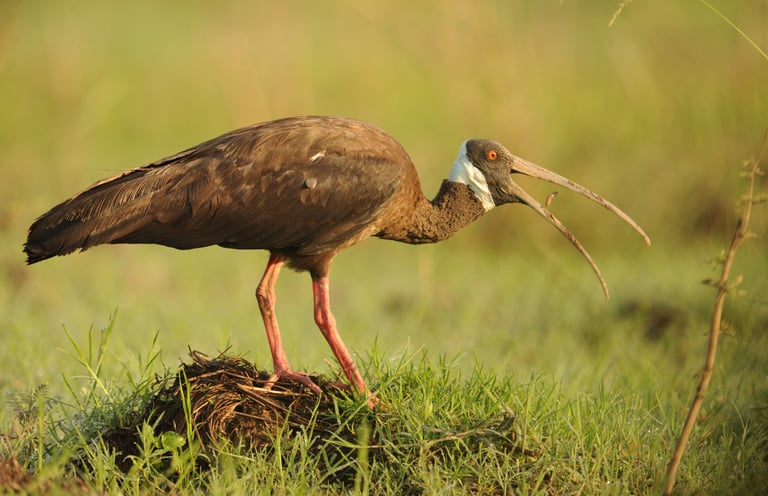

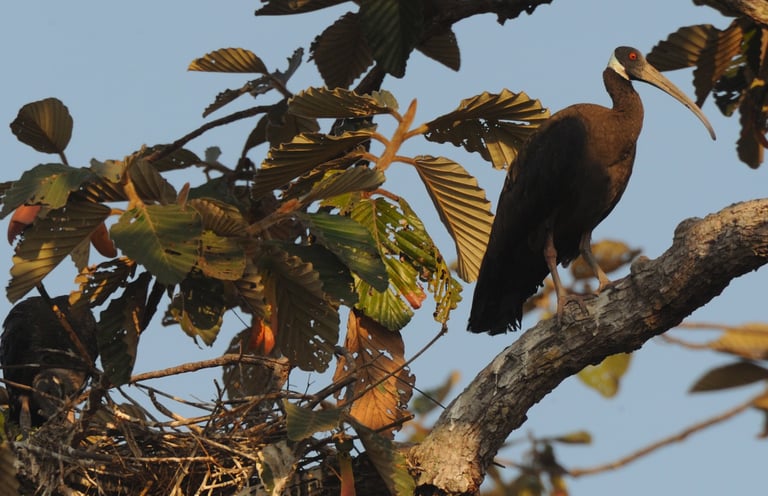

CONSERVATION STATUS:


Ibis nests are vulnerable to predation by a range of non-human as well as human predators. Ibis nests may be robbed by a diurnal predator such as a southern jungle crow or nocturnal mammalian predators including yellow-throated martin and common Palm civet, which have been shown to predate giant ibis nests. A study of the levels of nest predation using nest cameras and nest guardians was undertaken at Siem Pang. Surprisingly, it revealed that nest guardians do not necessarily improve nesting success. By the end of the breeding season in April 2024, we located 41 white-shouldered ibis nests, the highest number since we started monitoring.
White Rumped Vulture
Three vultures species breed in South-East Asia and all three of them occur in significant numbers at Siem Pang. They are the white-rumped vulture (Gyps bengalensis), slender-billed vulture (Gyps tenuirostris) and red-headed vulture (Sacrogyps calvus). Until twenty years ago these three species were considered common across South Asia. However, the populations have crashed by 99% as a result of ingesting diclofenac, an anti-inflammatory drug, which was introduced at that time for veterinary treatment for inflammation of the limbs of cattle and buffalo. Harmless to mammals, including humans, diclofenac causes visceral gout in vultures, which is invariably fatal.
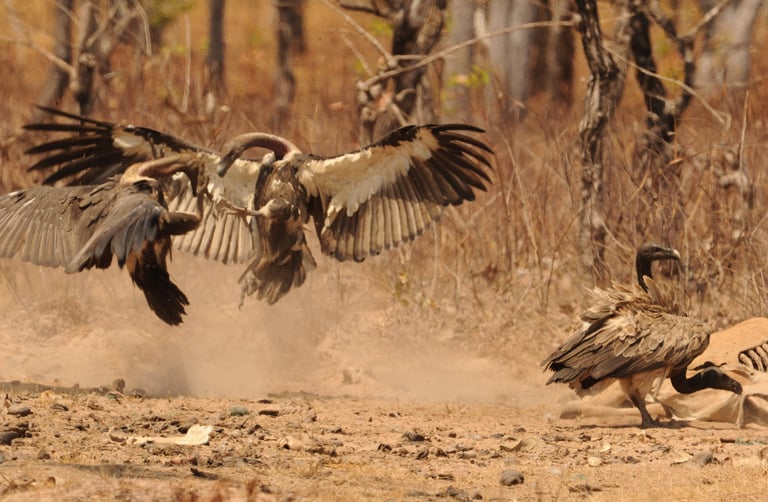

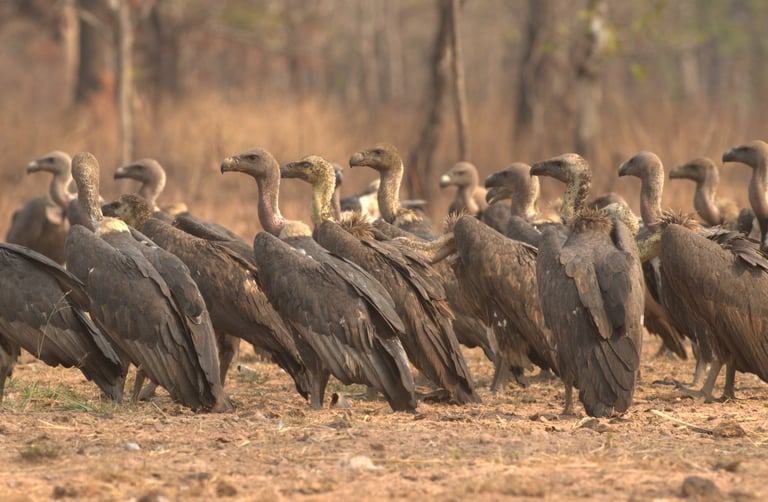

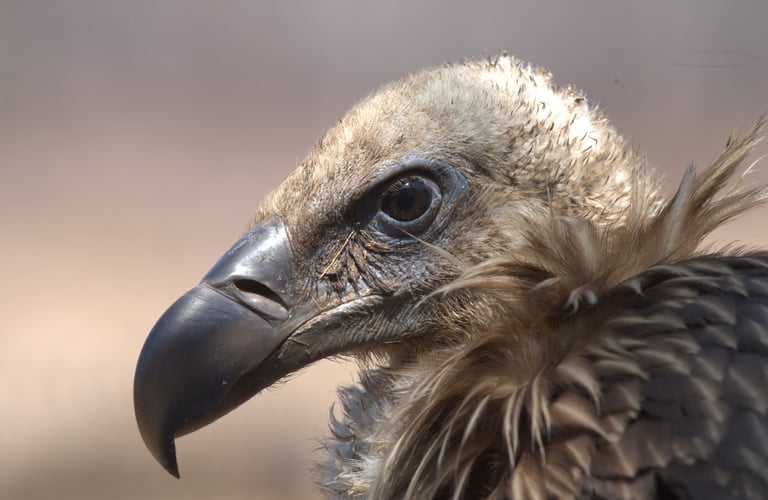

Vultures
In South-East Asia the extermination and disappearance of large mammal species from the landscape lead to a decline in vultures and today the only viable populations remain in Cambodia and Myanmar. As a result, these three species are considered Critically Endangered by IUCN which means there is a very high probability of their global extinction in the near future. Large numbers of all three species regularly visit the vulture restaurants at Siem Pang and two of the species, slender-billed vulture and the red-headed vulture, are known to breed there. The numbers of slender-billed vultures occurring at Siem Pang suggest it has the largest remaining population of this species on Earth.
The vulture species found in Eurasia and Africa detect their food exclusively by sight. In order to detect food, vultures patrol, flying at altitudes of up to 11,000 metres above sea-level, but more typically perhaps less than half that height, and at speeds of up to 30 km per hour, enabling them to cover hundreds of kilometres per day if they wish. Vultures make use of thermals, which rise from the ground during the warmest parts of the day. It is then that vultures are airborne, using virtually no more energy than they would at rest. With superb vision at such an altitude, a patrolling vulture can detect a dead animal on the ground.
CONSERVATION STATUS:


Red-headed Vulture
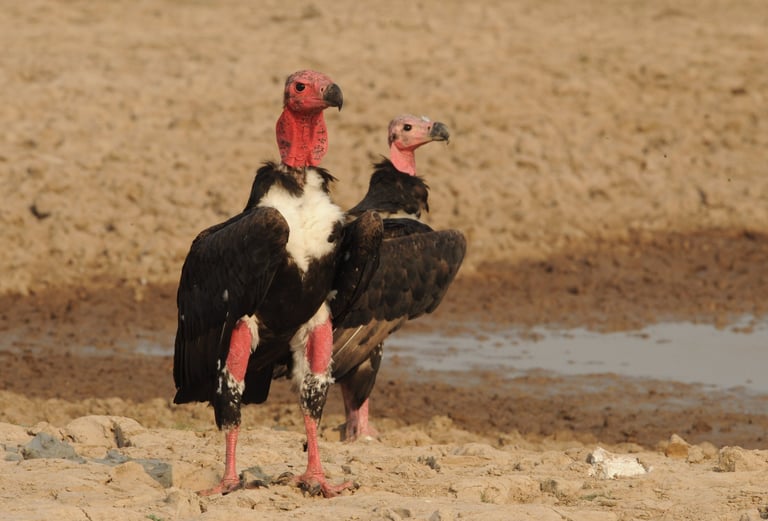

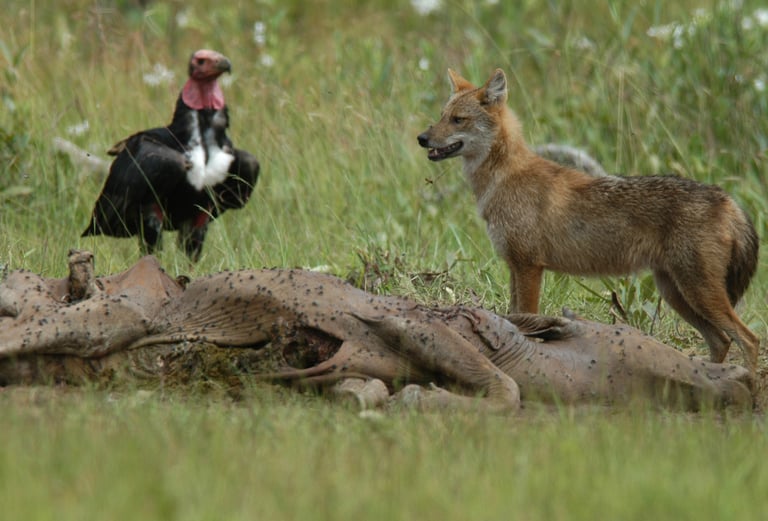

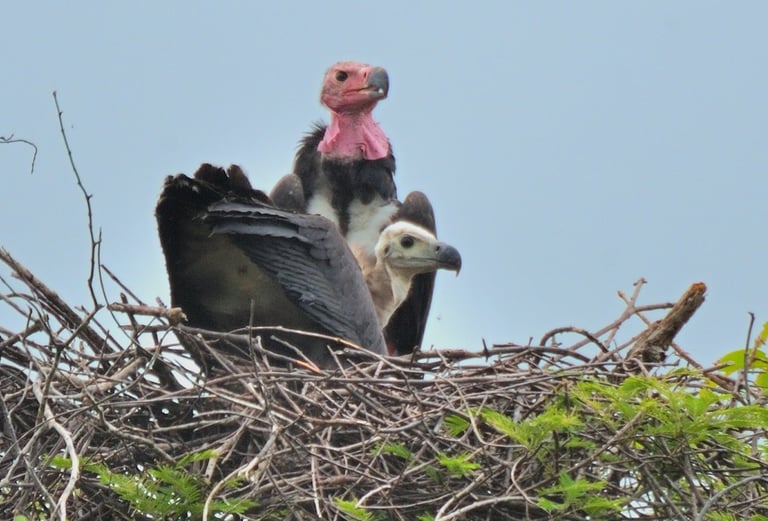

Vultures are very cautious birds. They need to be for their lives may depend upon it. Once a potential meal has been spotted from the skies vultures of different species begin to congregate in nearby trees. Before descending to feed they must be quite sure that the animal in question is dead. Since they feed only on carrion they cannot afford to suffer injury arising from merely disturbing a sick or sleeping animal. It may take more than 24 hours before they become confident enough to descend and feed.
They need also to be sure that predators that may also be drawn to the kill are not present. Again a vulture risks injury or death resulting from the blow inflicted by a Tiger or Leopard, who may have killed the animal in question which may have been drawn by its smell. Feeding too can be a potentially hazardous situation. Vultures may draw their third eyelid, known as the nictitating membrane, across their eyes for protection and to moisten it while maintaining visibility. Once gorged, the vultures will retire to the trees once more to digest their meal.
Vulture restaurants are sites where food, in the form of dead domestic livestock is put out by scientists to monitor vulture populations and to provide supplementary food in times of scarcity. At Siem Pang a vulture restaurant has been held every month since 2005 and since 2013 they have been held bi-monthly. This activity forms part of a wider study to monitor the population size and trends in vulture populations in Cambodia. The study has also employed wing-tagging and satellite tracking since vultures may cover vast distances in search of food, and it is important to know how far vultures range. From this study we know that vultures move from Preah Vihear Province across the Mekong River to Stung Treng and Mondulkri provinces.
Slender-Billed Vulture
By March, slender-billed vultures have well-grown young in the nest. The youngster in this nest already approaches the size of an adult but is still dependent on its parents, who both maintain feeding and nest guarding duties. When feeding the young of this age the adult regurgitates meat from a perch above the nest rather than from within the nest, perhaps to avoid injury inflicted from the sharp-edged bill of the hungry youngster.
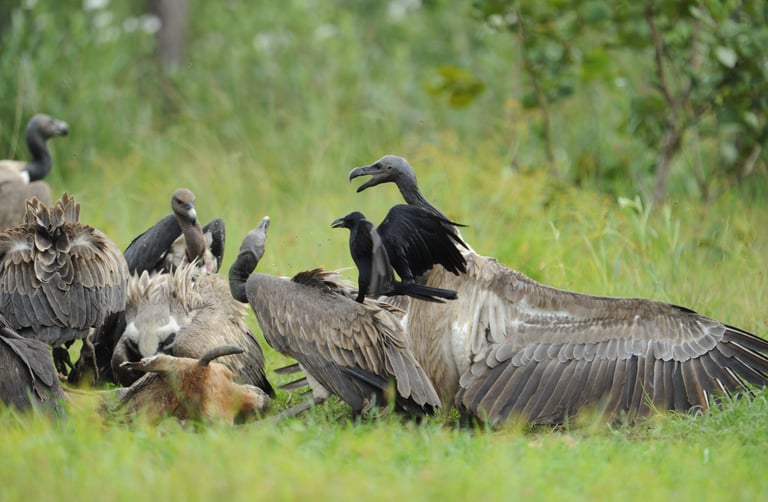

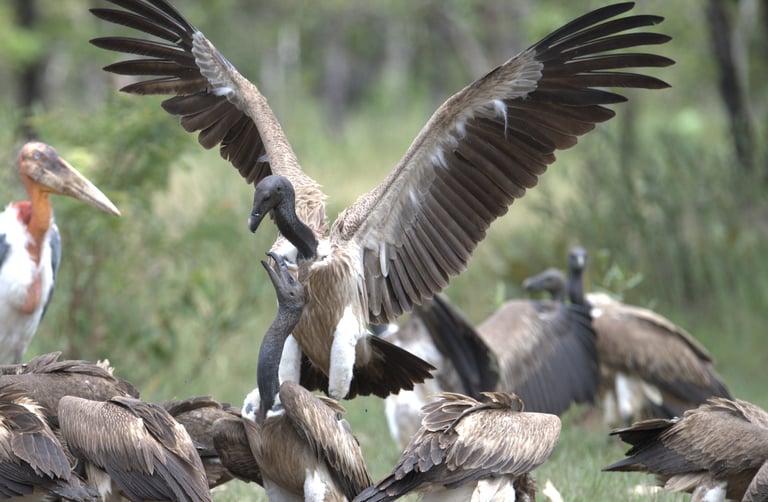

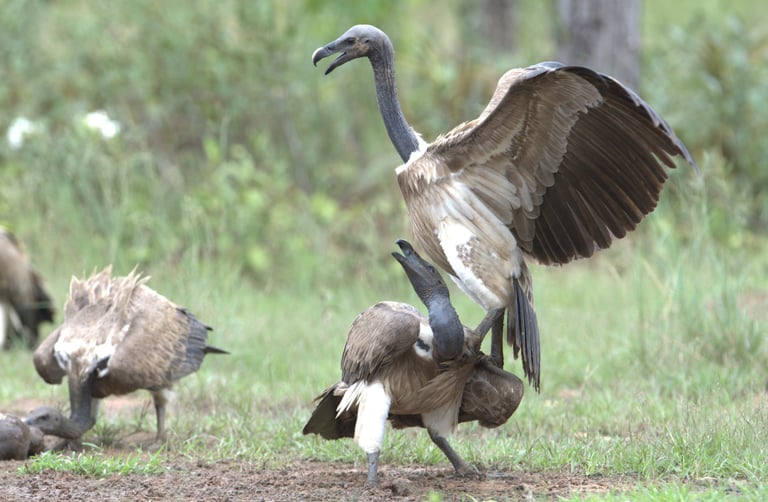

Fighting between vultures is common at a kill. Fighting may be between individuals of the same species or between species. Vultures often displace one another at the kill by a sharp peck and this is sufficient notice for a bird to give way. Vultures’ bills are sharp and no vulture can risk an injury that may result in death. The most intense fighting seems to occur once most of the frantic feeding is out of the way, suggesting more complex social interactions may sometimes be taking place.
A vulture can also detect and monitor the movements of other vultures that may have already seen a prey item and modify its course accordingly. All vultures have distinctive flight silhouettes and often have contrasting wing or body plumage patterns enabling them to distinguish different species when they are airborne, either from above or below.
Siamese Crocodile
Originally, the Siamese crocodile was believed to be extinct in Cambodia. However, a small group was found in Cardamom Mountains in the year 2000 which sparked conservation efforts through captive breeding and reintroduction to the wild. In Cambodia’s wetlands and rivers, Siamese crocodiles are fish-eating apex predators. As returning an apex predator to its natural environment can restore ecological equilibrium, Rising Phoenix decided the reintroduction of Siamese crocodiles would benefit Siem Pang Wildlife Sanctuary. The project began in 2022, when we secured funding from the Critical Ecosystem Partnership Fund, to continue the re-introduction of the Siamese crocodile to Siem Pang until 2025.
The re-introduction process involved DNA testing of crocs in croc farming to ensure pure Siamese crocodiles. In Siem Pang, much effort went into creating and restoring a habitat before reintroducing the crocodiles. The Rising Phoenix LSU dug deep waterholes in the sanctuary and allowed nature to reclaim the area to create an environment that was best-suited to the crocodiles. This included ensuring the crocodiles had access to the plants they need to make nests after breeding, such as bamboo thicket and woodland.
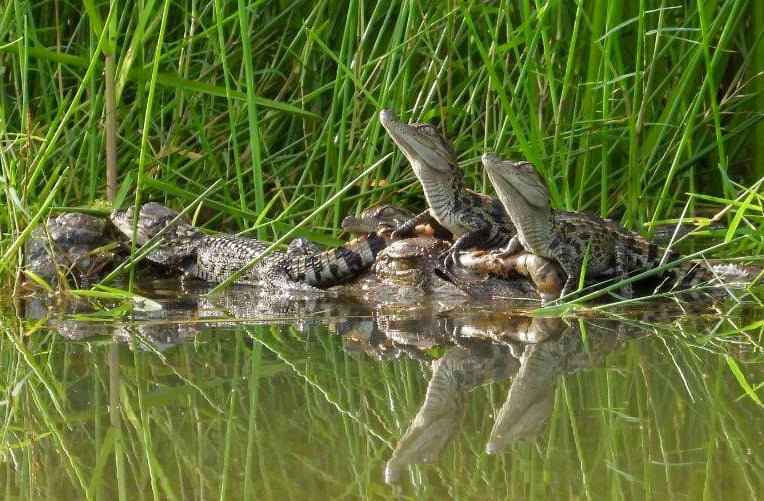

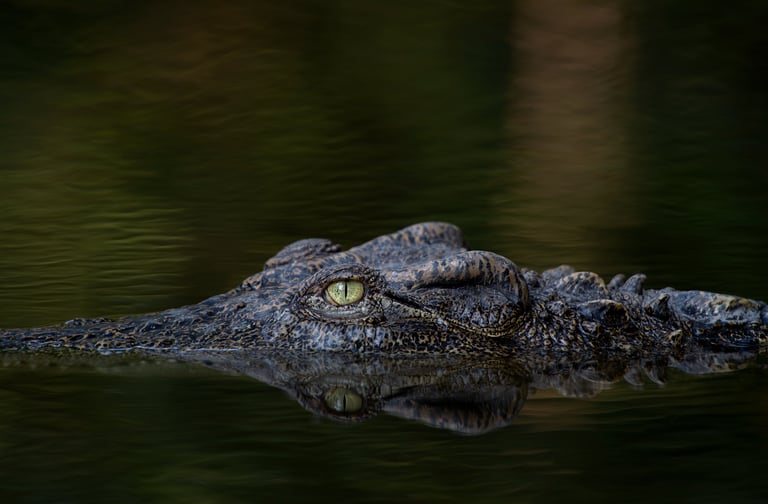

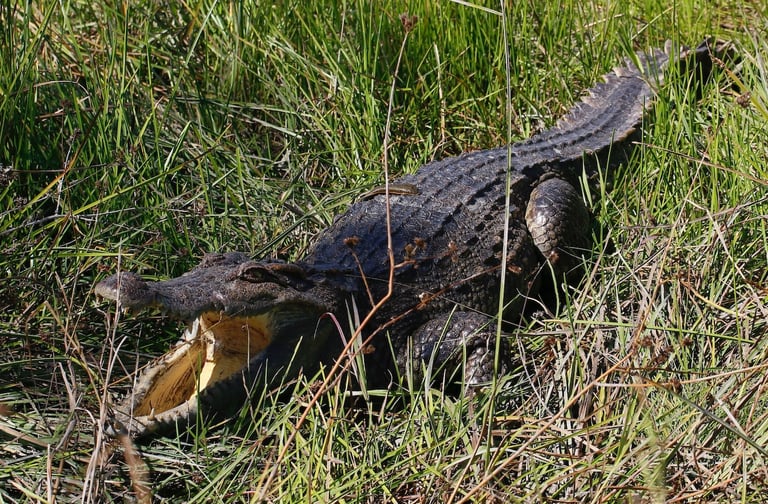

CONSERVATION STATUS:


In 2024, one nest produced 14 Siamese crocodile hatchlings, making the first recorded incidence of rewilded crocodiles breeding in Cambodia. Rising Phoenix has released 80 crocodiles in total to serve as a founder population. Now, there are fully wild Siamese crocodiles in Siem Pang for the first time in decades. Siamese crocodiles have moved into the rivers and re-populated other areas in Cambodia from Siem Pang.
Burrowing Frogs
The dramatic seasonality of the dry dipterocarp forest in Siem Pang is home to a suite of highly adapted burrowing, or balloon frogs. Burrowing frogs are fossorial species, spending most of their lives underground, emerging to breed en masse only after periods of heavy rainfall in April and May. Large numbers may be collected after the first heavy rains in late April or May.
At least four species of burrowing, or balloon frog, are found in Siem Pang Wildlife Sanctuary, known collectively as Hing in Khmer. The most notable of these is the blunt-headed balloon frog. Whether it appears cute or repulsive is a personal opinion, but it is famed in Cambodia as the most delicious frog. The species can be found in the markets of Siem Riep, and it is traded with Thailand.
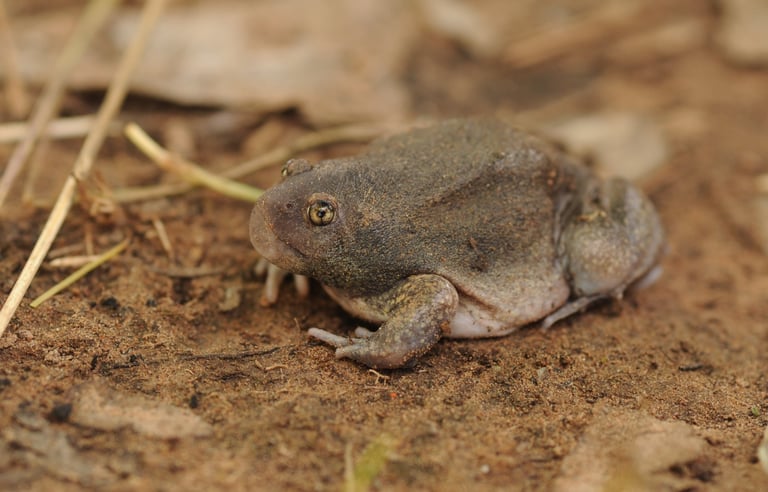

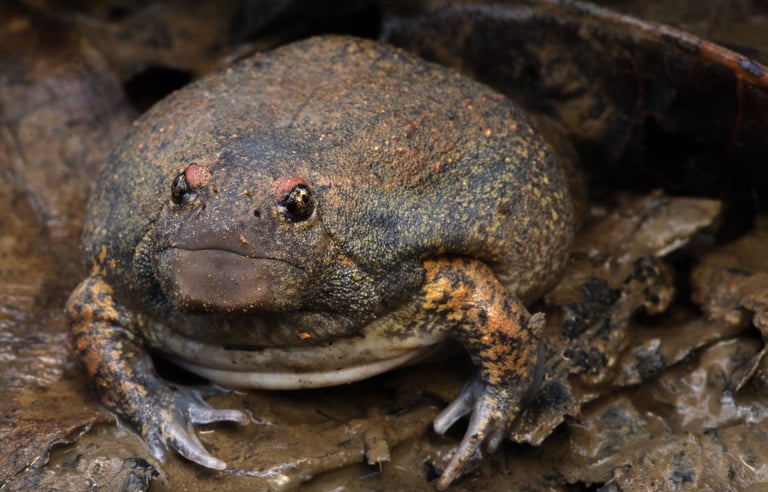

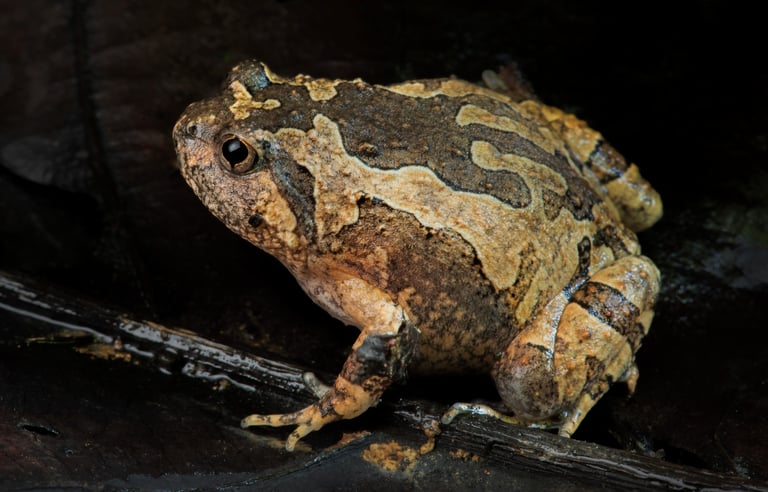

CONSERVATION STATUS:

During the brief breeding events, local people collect the frogs to either supplement their diet or to generate additional income. These two factors lead to its widespread consumption and trade. This has resulted in over-collection, and this species is now at risk, prompting a Near Threatened designation from IUCN. The Siem Pang Wildlife Sanctuary remains one of the most important protected areas for these frogs in Cambodia.
Burmese squatfrog
Truncate-snouted burrowing frog
Blunt-headed balloon frog
Indochinese Silvered Leaf Monkey
Only recently recognized as a species distinct from the widespread Trachypithecus cristatus of Sundaic South-east Asia, the Indochinese Silvered Leaf Monkey is both poorly known and considered globally Endangered by IUCN. At Siem Pang it is a scarce inhabitant of the Riverine Forest and nearby Semi-Evergreen Forest patches.
Mainly arboreal, this species is most easily detected at dawn and late afternoon when they sit in treetops to catch both the first and last rays of sun. Leaf monkeys belong to the subfamily Colobinae or Colobine monkeys, which have a unique digestive system that enables them to eat leaves as their staple food source, which in turn is supplemented by flowers, fruit and small animals. Many of the leaves they eat are high in toxins and it is possible that they practice geophagy, the habit of eating soil rich in Sodium, which may help to remove plant alkaloids from their bodies.
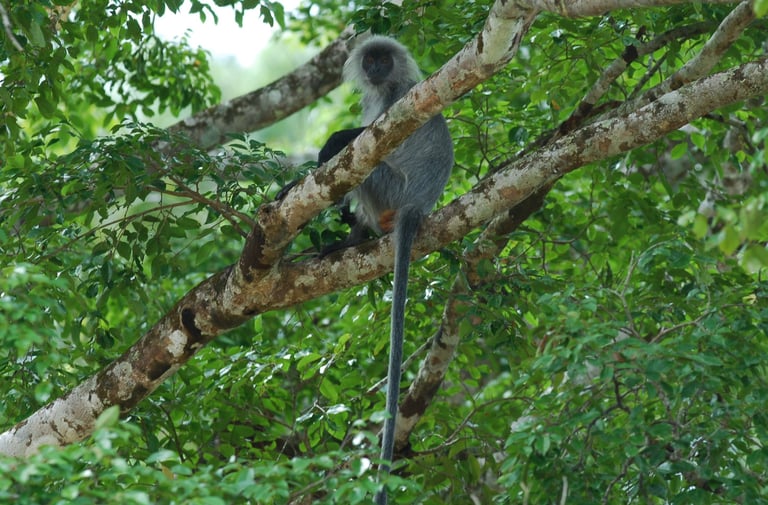

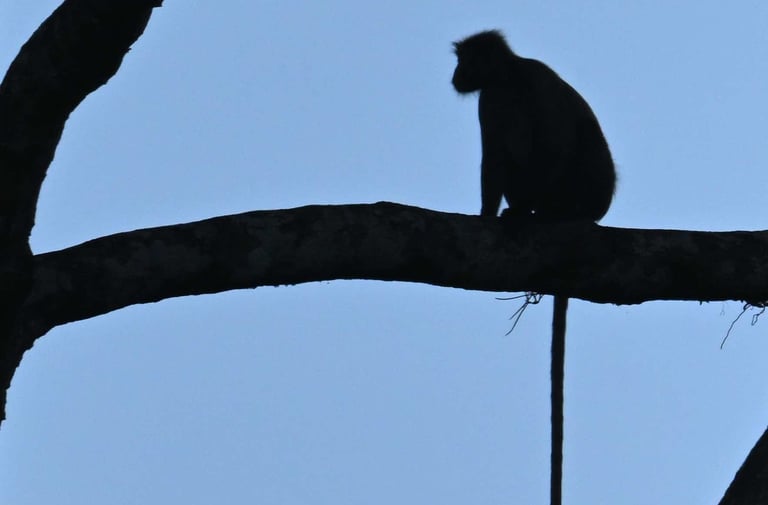

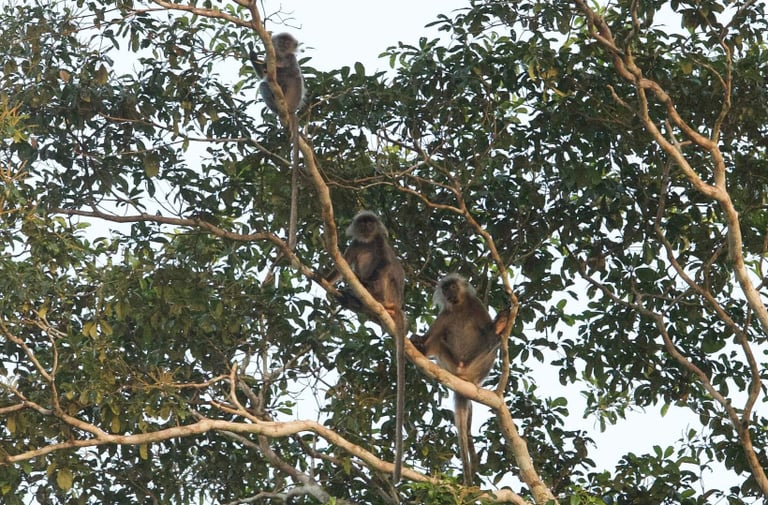



CONSERVATION STATUS:
The Indochinese silvered leaf monkey is endangered primarily due to habitat loss, hunting, and the pet trade. Groups of around 30 monkeys have been seen in the sanctuary at once when looking at camera trap footage in SPWS
Banteng
Banteng are in the Bovid family. Wild Water buffalo and Kouprey are both extinct as types of the 4 Bovid that used to be present in Cambodia. Now, only Banteng, Gaur, and domesticated buffalo are left. Banteng are often hunted for their meat and their horns, for use as medicine and for sport hunting, all of which habitat loss has worsened. At one site, it is estimated that at least one banteng is snared every month.The ecological function of banteng is due to their grazing, as they create open spaces for new plants by dispersing seeds. Whilst some live in protected areas, due to a lack of trained rangers and resources for protected area management, even there they are not safe from poaching. Despite the best efforts of some dedicated individuals, these banteng herds are faced with continued attrition and face ultimate extinction.
A significant number of Cambodia’s banteng exist outside protected areas in small forest patches. These areas are of insufficient size to warrant protected area designation, and some are being cleared for agricultural land-use, such as cashew and sugar cane plantations. Estimates suggest that Cambodian forests now support no more than 1,000 banteng. Amongst many in the conservation community, there is a failure to grasp the reality and inevitability of the situation. Perhaps uniquely, SPWS offers some hope for the conservation of this iconic species. In 2024, a herd of banteng were found in an area of degraded forest lying 30 kilometers south of Siem Pang Wildlife Sanctuary. The BMU team was mobilized and conducted on the ground and drone monitoring with a thermal imaging camera. It was found that the herd was at great risk outside the sanctuary as two of the herd were shot by poachers.
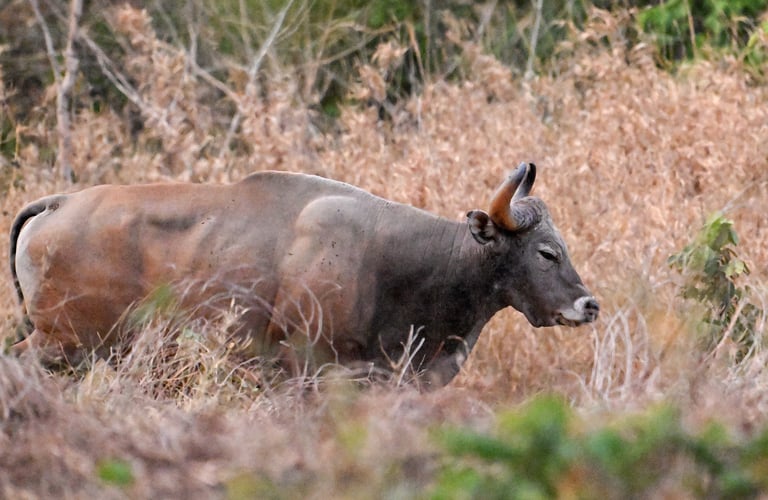


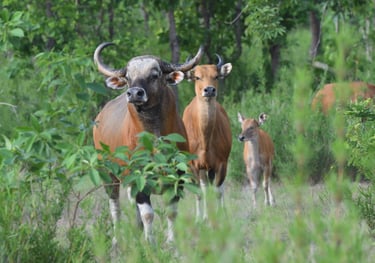
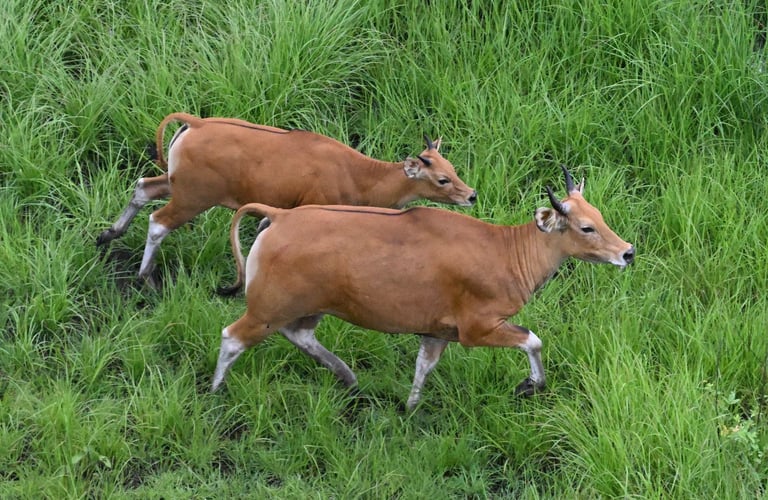

CONSERVATION STATUS:


With the use of a helicopter and teams of knowledgeable people who had been through prior rigorous drilling, the banteng were captured. The banteng were transported to the SPWS and released. This operation has seen 16 banteng translocated into the wildlife sanctuary, seven of which are in our fenced enclosure. A core part of the Rising Phoenix mission is to restore the ecosystem in SPWS - to return native species and natural ecosystem function. With this recent translocation we have taken an important and timely step towards restoration of the Critically Endangered banteng and its dry forest habitat in SPWS.
Elongated tortoise
Many elongated tortoises are confiscated from the illegal wildlife trade, they are frequently traded due to the pet-trade, poached, and used in traditional medicine. Their recovery involves captive breeding and soft-release programmes to reintroduce them back into their natural habitats in areas like Siem Pang. The elongated tortoise was therefore identified as a species suitable for re-introduction. Conservation efforts by organizations like the Angkor Centre for Conservation of Biodiversity (ACCB,) as one of the Rising Phoenix's partners, are crucial for the survival of elongated tortoise.
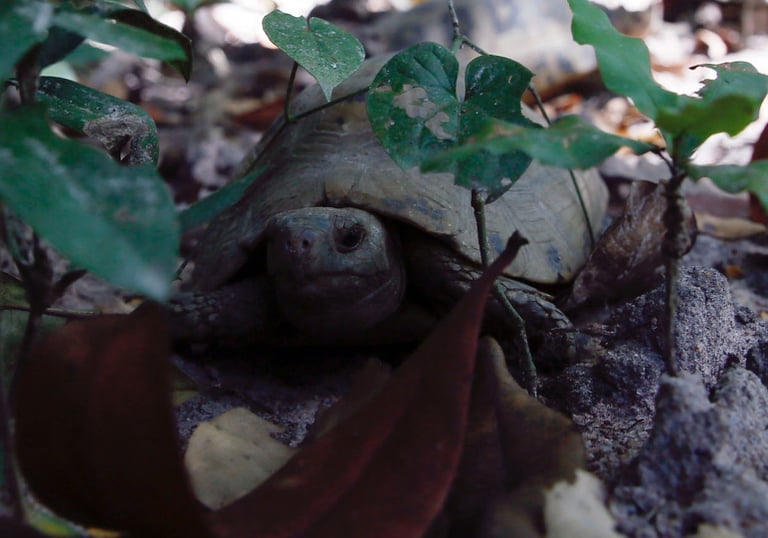

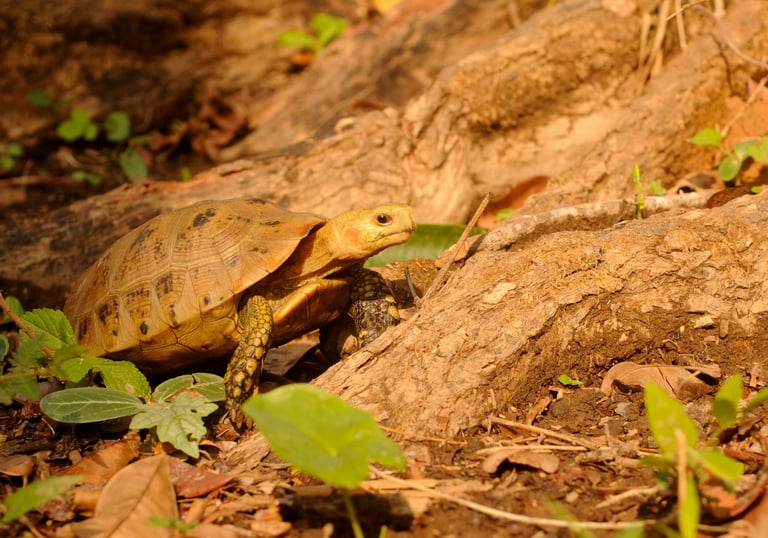

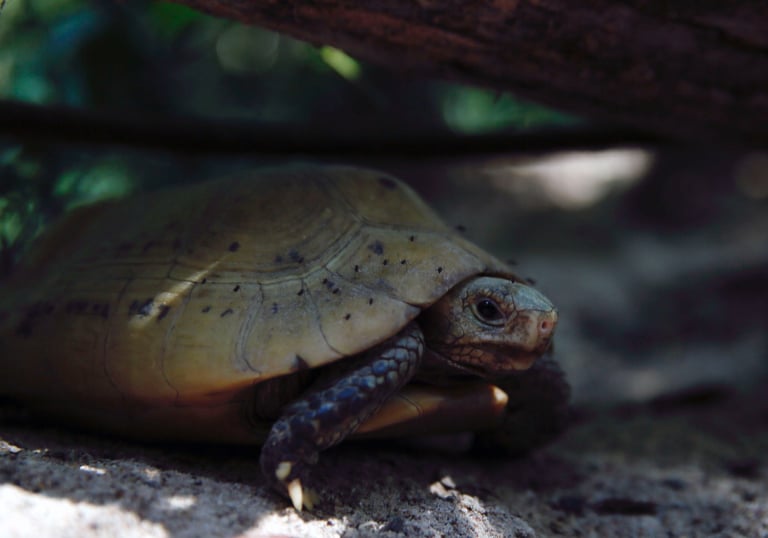

CONSERVATION STATUS:


In April 2023, we worked with the ACCB, when we released one hundred captive-bred elongated tortoises into a pre-release enclosure in the semi-evergreen forest. Before release, all of these tortoises has undergone blood testing in a US laboratory to ensure they were clinically suitable for release and were not carrying any pathogens or parasites that could be transmitted to the wild population, which albeit at depressed levels due to hunting, remains in the Sanctuary.
In 2024, the 100 elongated tortoises we had kept in a 1ha pen for a 9 month acclimatization period were allowed to self-liberate in January when we opened the enclosure. A subset of the tortoises was fitted with GPS and VHF radio trackers. These devices provide data on their movement, habitat preferences, and survival rates.
Green Peafowl
Riverine Forest is a preferred habitat of the green peafowl, and despite being listed as globally Endangered by IUCN it is still fairly common along the Sekong River at Western Siem Pang. Throughout its South-East Asian range this species is hunted heavily and being a large bodied bird with predictable habits has not helped.
Being granivorous green peafowl must drink daily, usually along the same stretch of river. They also roost communally in dead trees. Two habits that mark them out as easy targets for hunters.
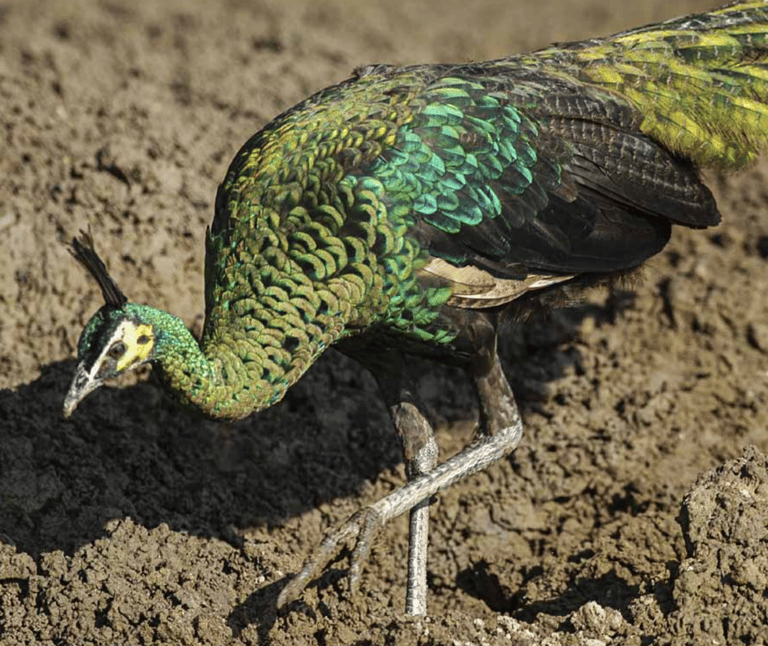


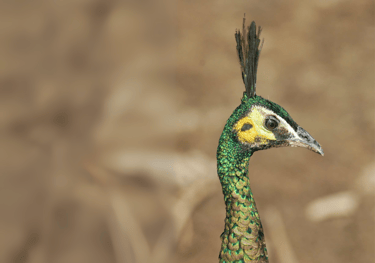
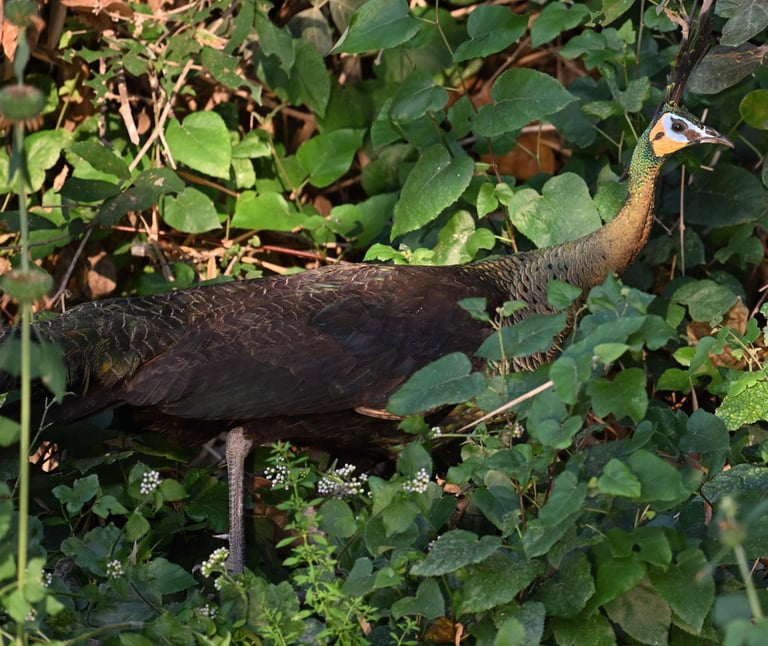



CONSERVATION STATUS:
Once widespread across the region the range of this species is becoming ever more fragmented, as riverine forests are the first to be cleared as humans use boats to settle areas in a landscape without roads. Since 2016, more than 400 green peafowl have been found, mostly in close proximity to the sanctuary’s rivers.
Greater Adjutant
This globally Endangered species is a regular wet season visitor to Siem Pang in increasing numbers when it visits vulture restaurants and larger grassland areas such as Veel Kreel from June to October. Beyond India, Cambodia now supports the largest remaining population of this once widespread species. The largest colony in Cambodia is located in the water bird colonies at Prek Toal on the Tonle Sap Lake where approximately 150 pairs now breed. Improved management of this site has resulted in a steady increase in the numbers breeding there. This is welcome news as colonies in India have declined in recent years. The Cambodian population is thus increasing in terms of its global significance.
Although the origin of the Siem Pang birds currently remains a mystery, they most probably originate from the Prek Toal colony. Greater adjutants, like many other storks, are dry-season breeders and disperse away from their nesting colonies during the wet season to feed in flooded areas and to take advantage of the fish that remain as the water levels subside in the late wet season. Although Siem Pang appears to be only a part of the non-breeding range of the species, the increasing numbers recorded there are very encouraging, and with appropriate protection, it is possible that a colony may become established in the future.
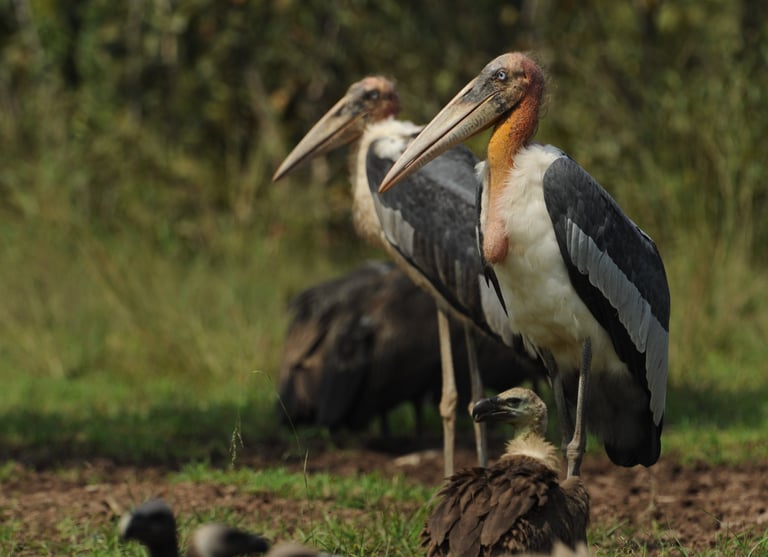

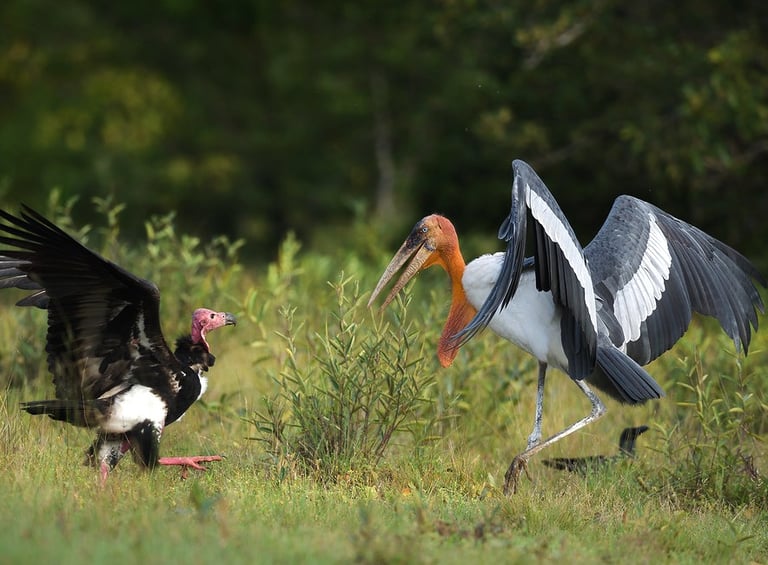

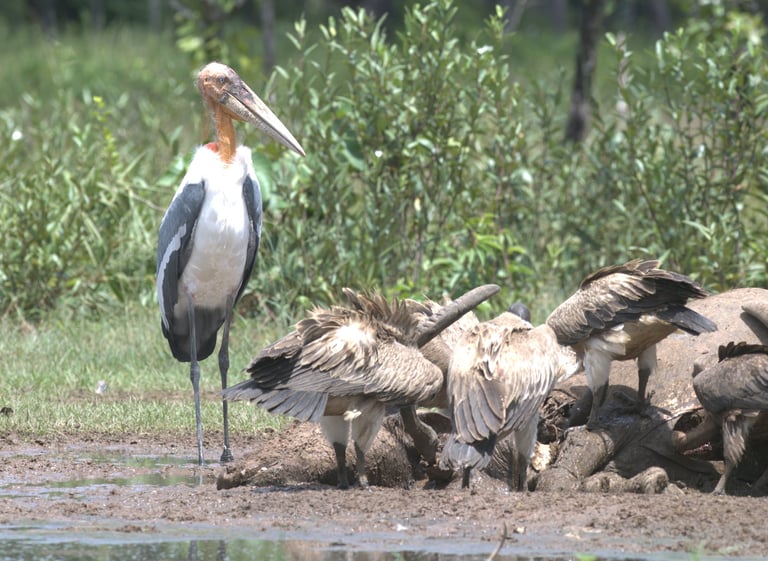



CONSERVATION STATUS:
Rising Phoenix offers a safe haven for greater adjutant in the wet season when the Tonlé Sap floods after they breed. Greater adjutants fly across the country looking for dead animals and scavenging the bones left behind from other scavenging animals. Unfortunately, now most of these areas where they would find food are farmland where they are at risk of being killed. Rising Phoenix's 'vulture restaurants' provide them with a food source, and the sanctuary means they are protected from poaching or poisonings.


